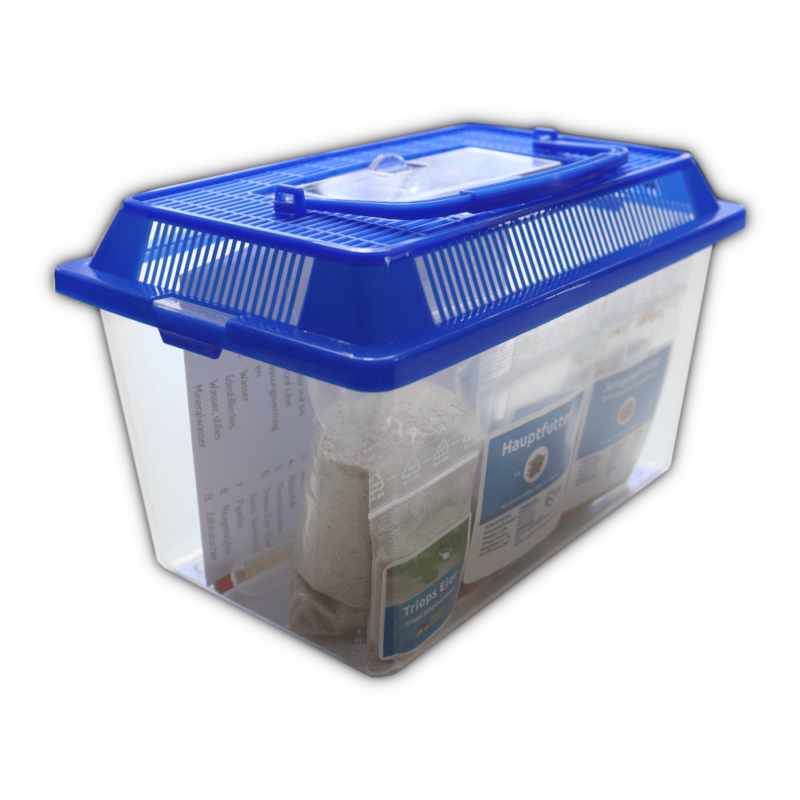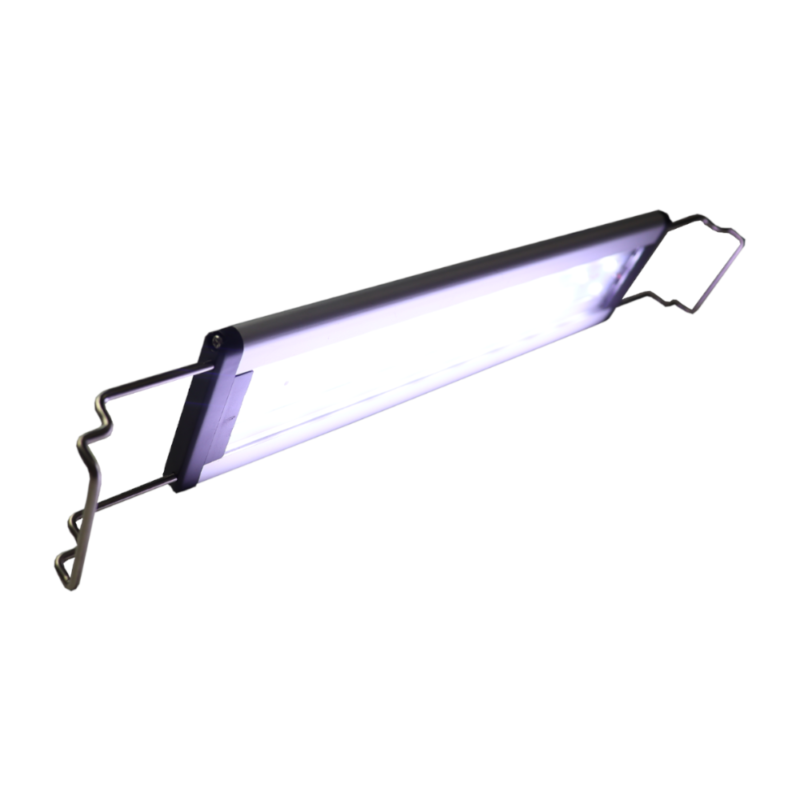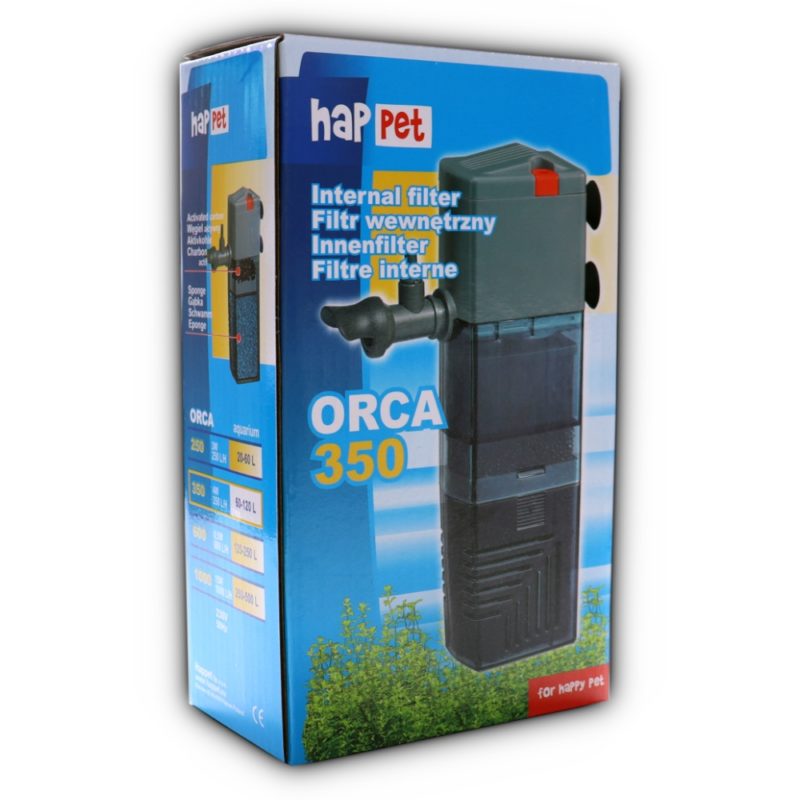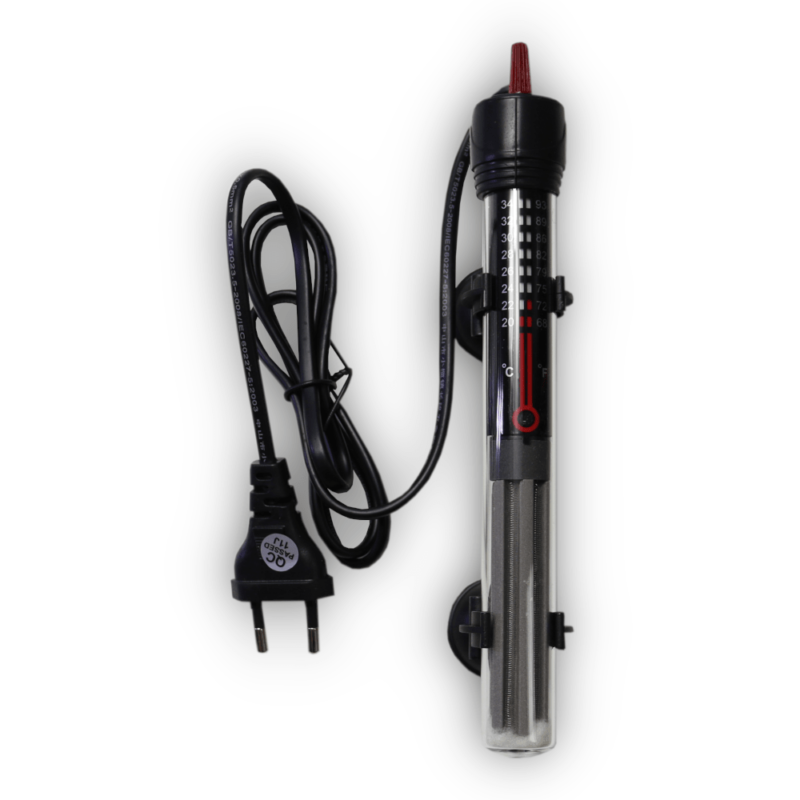Guide
Aquarium technology in Triops breeding: What you need
You don’t need much in the way of aquarium equipment to start breeding Triops. Besides our primeval crayfish starter pack mini, the prospective breeder only needs a small tank for breeding and lighting. This can also be a desk lamp for the beginning. As long as it provides enough light and some warmth in the cold months, the purpose is fulfilled. Then just pour in water with the breeding stock and wait. Breeding Triops is as simple as that. If the breeding is successful – and we naturally assume that it will be – the question arises as to which aquarium technology is important for breeding. Which aquarium should be purchased to relocate the adult animals and keep them there permanently? Which filter is recommended and at what point should it be used? Do you need a membrane pump? Should it be an internal or external filter? Should I use a plastic Faunabox or a glass aquarium? Do I need to heat the aquarium and which heater is recommended? As you can see, there are many technical questions that can quickly confuse a beginner. In this blog article, I explain which aquarium technology is important so that you can enjoy your Triops.
Aquarium technology: rearing tank and aquarium
Before we get into the actual aquarium technology, I would first like to look at the rearing tank for the nauplii and the aquarium for adult animals. Basically, any container with a capacity of up to five litres can serve as a rearing tank. It doesn’t matter whether it is a plastic container, a Tupperware container, a glass bowl or even a cut-open bottle. As long as the container is not too big and has only been washed with water and no chemicals, it is perfectly adequate. The breeding tank does not have to win a beauty contest. The tank should not be too large for the reason that the tiny nauplii cannot find the food in the first few days and can die. Our Triops sets are delivered in a Faunabox of the size 18 x 12 x 14 cm and 35 x 21 x 28 cm.

🏅 🏅 Triops longicaudatus – primeval crab set 🦐
Once the Triops have reached a size of about one centimetre – which is the case after about ten days – they can be moved to a larger tank or aquarium. The choice of aquarium size is up to you. Aquariums with a capacity of 12, 25, 45, 54 or 112 litres are available. It should be noted that the stocking should not be too dense, otherwise the water values will deteriorate rapidly and the too high nitrite value can lead to the death of the Triops. As a rule of thumb: two litres per animal. Let’s continue with the aquarium technology.
Aquarium Technology: Lighting
Without light, there is no successful breeding of Triops. After the tank, the water and of course a breeding kit, lighting is the most important utensil in aquarium technology. Light also has a positive effect and is important for the plants in the aquarium. For the nauplii to hatch from the eggs, daylight must be available or a lamp must be on. Only the light triggers the so-called hatching stimulus and hatching occurs. For the beginning, a standard desk lamp or even a light bulb is sufficient.
In contrast to an LED lamp, the hatching rate will be lower with a desk lamp or incandescent bulb. If there are problems with hatching nauplii, it is better to get an LED lamp after all. Later, when using it in the aquarium, a high-quality LED light is more practical anyway, as it can be fitted precisely, which a desk lamp cannot do. When buying, make sure that the lamp has a value of at least 6000 Kelvin (colour temperature) and 700 lm (lumen = light intensity).
For Triops Galaxy, the Happet aquarium LED top-mounted lamp has proved to be very effective.

Aquarium LED top-mounted lamp 6 Watt, energy efficiency class A+
Filter
One of the most frequent questions concerning aquarium technology is the question of choosing the right filter. It is also sometimes a hotly debated topic in aquaristics, so that a complete introduction to the subject of aquarium filters alone would take up an entire blog post and more. This would be far beyond the scope of this post, so I will limit myself here to the essentials regarding filters in Triops breeding. Sometimes you don’t need to complicate things unnecessarily when it can be done simply. As I am a great believer in essentialism, I keep many things according to the KISS principle (Keep it simple, stupid).
Why is a filter necessary in the aquarium?
A filter in the aquarium is important to maintain the biological balance. In aquariums, there is a permanent circulation of water as found in nature. The movement of the water creates filtration. In aquarium technology, the filter takes over the constant cleaning and treatment of the water. Through this process, waste substances such as food residues are filtered and not allowed back into the aquarium’s circulation. Since an aquarium, unlike natural waters with their biological cycle, does not have this kind of self-purification, a filter must take over this function.
Is it possible without a filter?
An aquarium is a closed system and, unlike a natural environment, is not able to sustain itself. In nature, residues are sieved out by the soil, which returns clean groundwater to the cycle. This water returns as rain. Toxins and waste products are transformed by microorganisms and plants and lose their toxic effect, the nitrogen content is lowered and the aquarium inhabitants are supplied with oxygen. If these essential filter functions were to fail, the water quality would rapidly deteriorate and the nitrite and nitrate levels would have a life-threatening effect on the animals. For these reasons, a filter should be used.
Internal and external filter
In aquarium technology, a basic distinction is made between internal and external filters. Both variants are offered in different designs and sizes and for every budget. Likewise, both variants have their respective advantages and disadvantages. External filters are usually more powerful and are used in larger aquariums.
External filter Advantages:
- High efficiency
- Cleaning less often necessary
External filter Disadvantages:
- Partly very loud
- Elaborate cleaning
- Needs more space next to the basin
Internal filters are not as powerful as external filters and cannot be used in large aquariums. However, they are excellent for small and medium-sized tanks.
Internal filter Advantages:
- Uncomplicated and quick cleaning
- Low suction risk
- Quiet operation
Internal filter Disadvantages:
- Performance decreases quickly with dirt
- More frequent cleaning necessary
With Triops Galaxy, the Orca 350 internal aquarium filter with the activated carbon box from Happet has proven itself.

💧 💦 Aquarium internal filter – Orca 350 with activated carbon box for clear water
Heating rod
Another aquarium accessory that should not be missing when breeding Triops is a heating rod. In the summer months, no additional heating is necessary, but as soon as the water temperature drops below 18 °C, heating is required. But be careful, not all Triops species need the same temperature.
The following table provides an overview of the required temperature for the most common species.
| Triops Cancriformis | 20 – 24 °C |
| Triops Longicaudatus | 23 – 26 °C |
| Triops Longicaudatus Red | 23 – 26 °C |
| Triops Beni kabuto ebi Albino | 22 – 25 °C |
| Triops Granarius | 24 – 26 °C |
| Triops Newberryi | 27 – 31 °C |
| Triops Australiensis | 27 – 31 °C |
You can’t go far wrong when choosing a heating rod. A good heating rod is available for less than ten euros. For Triops Galaxy, the Happet aquarium heater has proven itself in breeding and can be highly recommended.

Aquarium heater 50 Watt, infinitely variable
- Feeding Triops with spirulina powder: everything you need to know - 2. January 2025
- Happy New Year 2025! ☃️ 🎉 - 31. December 2024
- Palaeontology: A well-preserved baby mammoth has been discovered in Russia - 26. December 2024